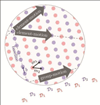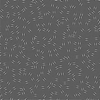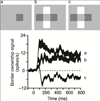A century of Gestalt psychology in visual perception: I. Perceptual grouping and figure-ground organization
- PMID: 22845751
- PMCID: PMC3482144
- DOI: 10.1037/a0029333
A century of Gestalt psychology in visual perception: I. Perceptual grouping and figure-ground organization
Abstract
In 1912, Max Wertheimer published his paper on phi motion, widely recognized as the start of Gestalt psychology. Because of its continued relevance in modern psychology, this centennial anniversary is an excellent opportunity to take stock of what Gestalt psychology has offered and how it has changed since its inception. We first introduce the key findings and ideas in the Berlin school of Gestalt psychology, and then briefly sketch its development, rise, and fall. Next, we discuss its empirical and conceptual problems, and indicate how they are addressed in contemporary research on perceptual grouping and figure-ground organization. In particular, we review the principles of grouping, both classical (e.g., proximity, similarity, common fate, good continuation, closure, symmetry, parallelism) and new (e.g., synchrony, common region, element and uniform connectedness), and their role in contour integration and completion. We then review classic and new image-based principles of figure-ground organization, how it is influenced by past experience and attention, and how it relates to shape and depth perception. After an integrated review of the neural mechanisms involved in contour grouping, border ownership, and figure-ground perception, we conclude by evaluating what modern vision science has offered compared to traditional Gestalt psychology, whether we can speak of a Gestalt revival, and where the remaining limitations and challenges lie. A better integration of this research tradition with the rest of vision science requires further progress regarding the conceptual and theoretical foundations of the Gestalt approach, which is the focus of a second review article.
Figures







 and
and  are dot lattices presented in alternation.
are dot lattices presented in alternation.
















References
-
- Alais D, Blake R, Lee SH. Visual features that vary together over time group together over space. Nature Neuroscience. 1998;1:160–164. - PubMed
-
- Allman J, Miezin F, McGuinness E. Stimulus-specific responses from beyond the classical receptive field: Neurophysiological mechanisms for local-global comparisons in visual neurons. Annual Review of Neuroscience. 1985;8:407–430. - PubMed
-
- Altmann CF, Bülthoff HH, Kourtzi Z. Perceptual organization of local elements into global shapes in the human visual cortex. Current Biology. 2003;13:342–349. - PubMed
-
- Anderson BL. The demise of the identity hypothesis and the insufficiency and nonnecessity of contour relatability in predicting object interpolation: Comment on Kellman, Garrigan, and Shipley (2005) Psychological Review. 2007;114:470–487. - PubMed
Publication types
MeSH terms
Grants and funding
LinkOut - more resources
Full Text Sources
Other Literature Sources
Miscellaneous

